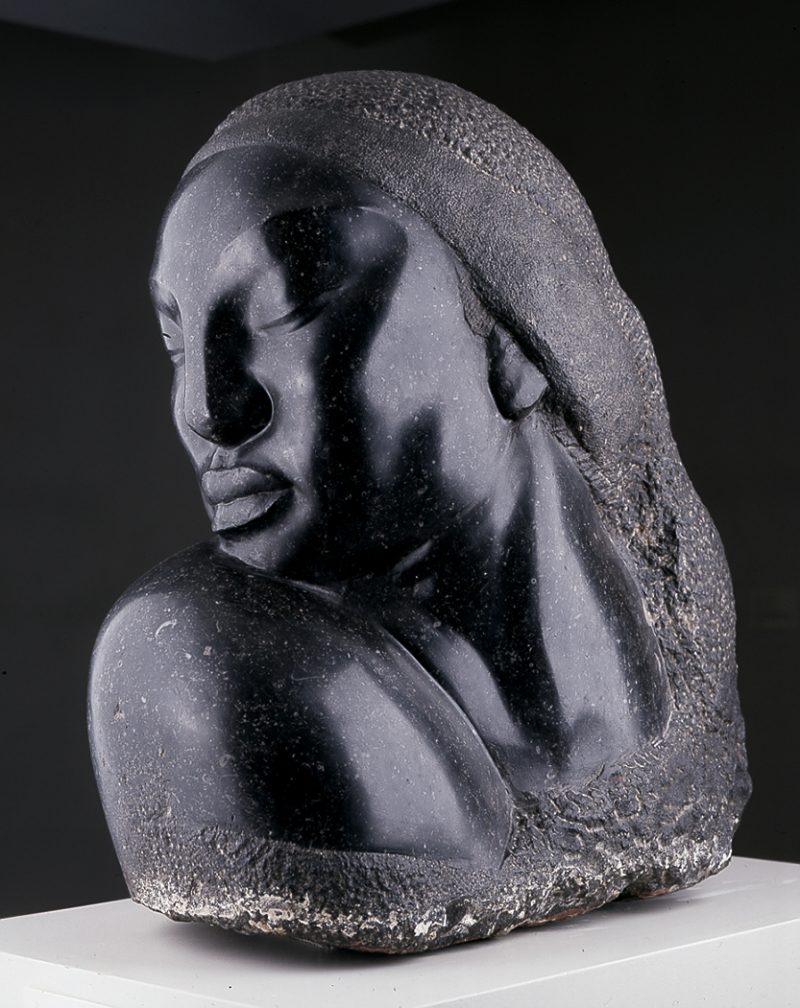
Maya
De Creeft, Jose
1939
Artwork Information
-
Title:
Maya
-
Artist:
De Creeft, Jose
-
Artist Bio:
American (born in Spain), 1884–1982
-
Date:
1939
-
Medium:
Black limestone
-
Dimensions:
26 x 12 x 22 3/4 in.
-
Credit Line:
Wichita Art Museum, Roland P. Murdock Collection
-
Object Number:
M42.42
-
Display:
Not Currently on Display
About the Artwork
Maya represents a premier work by a gifted sculptor who influenced the development and appreciation of the direct-carving movement in the United States during the 1930s and 1940s. Maya is also a landmark in Josй de Creeft’s career because the exhibition of this piece ignited critical attention to his work. In his native Spain de Creeft trained in the academic methods of clay modeling, then, upon contact with modernists centered on Picasso, abandoned the ideal of refined production for the modernist idea of discovery. By the time de Creeft had immigrated to the United States in 1929 he had begun to conceive of sculpture as a process, a virile match of maker against a worthy opponent of hard, resistant material, a probing interchange of personal feeling and tactile materials.
This monumental bust of a lush female figure, eyes partially closed, directly carved by the artist from a great block of black granite is arguably Josй de Creeft’s masterpiece. In Maya de Creeft achieved a stately rhythm of sensuous, swelling masses, their bulk and movement circumscribed by the simplest geometric contours of equilateral triangle and vertical rectangle. In answer to an inquiry about the inspiration for Maya and the meaning of the title, the artist replied that he was challenged by two beauties, one a beautiful model then in his employ and the other a stone so delicious that he had set it aside for a number of years, afraid to start breaking into it, but wanting to create a “handsome work….something eternal.”[1]
The artist’s combat with the stone yielded a powerful Earth Mother, an exotic Other exhibiting the full lips, high broad cheek bones and slanting eyes suggestive of Negroid and Asian racial types. As the viewer walks around Maya examining her changing contours from different perspectives, she seems to sleep, head leaned into her shoulder in repose, then she seems to be awakening, as if feeling her immense fertility stir within her, as the aorta of her huge neck bulges in the strain of a twisting turn against the opposing thrust of a massive shoulder. Echoing this slow dance of relaxed and straining mass is the surface opposition of smooth polished skin against the grainy texture of a hair band and the deep stippling of the long hair that sweeps down to her throat.
[1] Josй de Creeft, letter to Elizabeth Navas, Wichita Art Museum, dated . Wichita Art Museum archives.